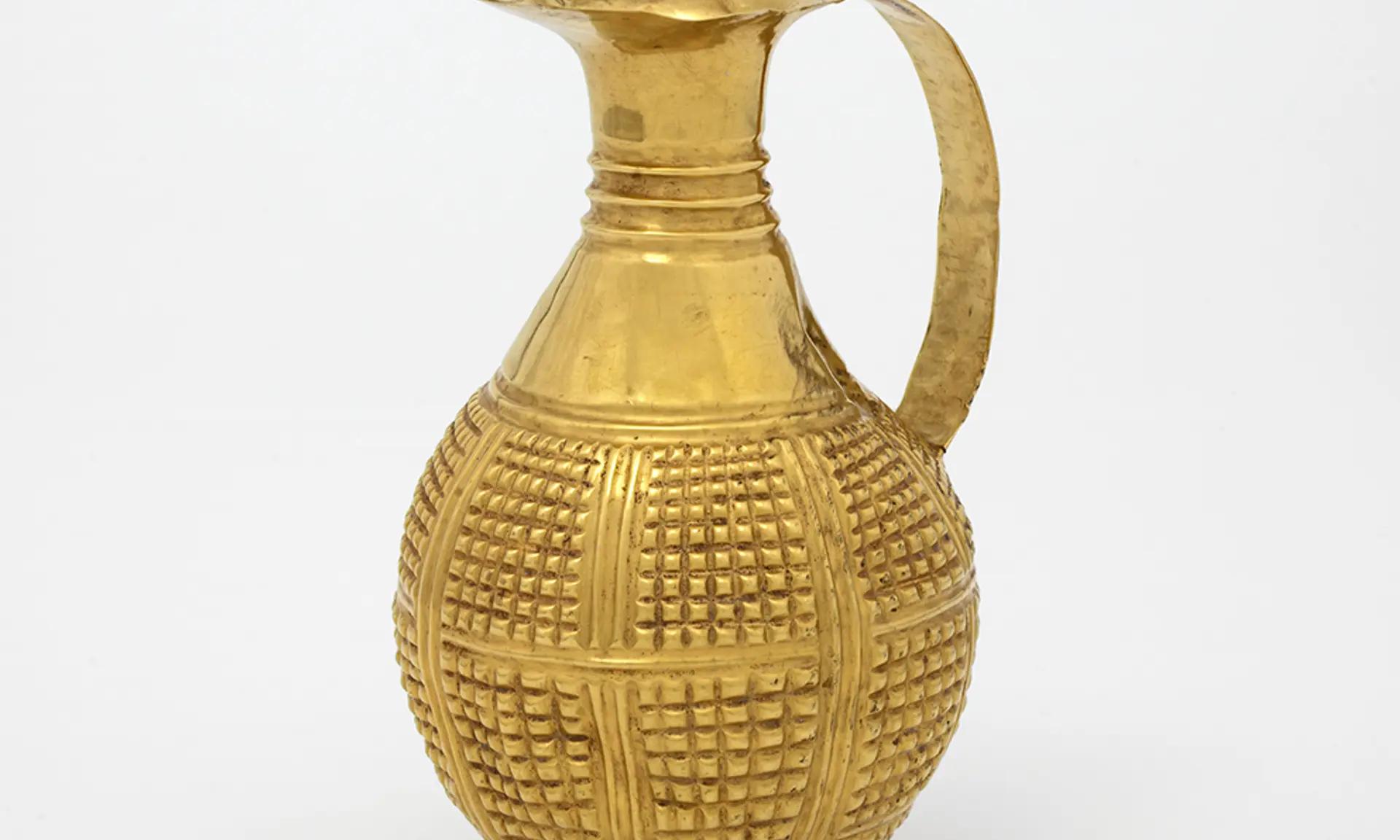Gold Ewer
© The Rosalinde and Arthur Gilbert Collection
Earlier this week, the Victoria & Albert Museum director Tristram Hunt was in Istanbul to celebrate the return of a 4,250 year-old Anatolian ewer to Turkey. But this wasn’t a piece from the V&A’s collection. Rather it belonged to a trust established by Arthur Gilbert in 1996, the collection of which is currently on long-term loan at the museum and sits in the same red brick and terracotta building in South Kensington, making it practically indistinguishable from the V&A’s collection to the average visitor. While Hunt sits on the trust’s board (explaining his involvement in this week’s handover) and the trust and museum boards share the same chairman, they remain distinct legal entities.
But in deciding to return this incredible ewer did the Gilbert Trustees get it right?
The restitution of cultural objects to their original owners or place of origin is a hot-button issue these days. France will be sending back three monumental sculptures, two royal thrones, carved doors, altars and staffs to the West African country of Benin in November, after one last stand at Paris’s Quai-Branly-Jacques-Chirac Museum this week. These 26 items had been looted by French troops from the city of Abomey in 1892. The return is part of the implementation of President Emmanuel Macron’s call for restitution of African heritage to Africa first announced in his famous 2017 speech. Germany, the Netherlands and Belgium are all taking steps in this direction, most notably in relation to artefacts obtained during the colonial period.
The ewer is different. It was not war loot. Nor was it acquired from one of Britain’s colonies. It is an antiquity that was discovered during the mid-to-late 20th century in Turkey and was subsequently acquired by an American antiquities dealer named Bruce McNall, who sold it to Arthur Gilbert in 1989. The name McNall might raise red flags today, as he was once associated with the late dealer Robert Hecht, who before his death in 2012 was on trial for smuggling artefacts out of Italy. Was any of this known to Gilbert when he acquired the ewer? No. Did he ask how the piece had been exported prior to buying it? Likely not, but such questions were not common at the time.
Does any of this impose a legal obligation on the Gilbert Trust to return the piece? There are many who feel an unlicensed removal from Turkey should make the artefact subject to prompt restitution. But English law does not in general allow the enforcement of foreign export laws and, in any event, the limitation period of six years for bringing a claim in the English courts has almost certainly expired. Nor does international law assist a country like Turkey in this respect, since the most prominent international convention in this area, the 1970 Unesco Convention on the Means of Prohibiting and Preventing the Illicit Import, Export and Transfer of Ownership of Cultural Property, does not apply retroactively (that is, before the date the UK signed the convention in 2002).
But with the ewer we are beyond the strict letter of the law and into the realm of ethics. Is it right for the Gilbert Trust to hold onto an item of great importance to Turkey, especially in the context of understanding the country’s ancient past, which was spirited out without heed to the authorities? This seemed to be at the heart of the trustees’ recent decision to return.
There are, however, barriers for a trust in England hoping to dispose of trust assets. If owners like Gilbert establish a trust to further a public purpose like the edification of the public, then trustees managing such property cannot simply alienate it arbitrarily. There is a process to be followed, one that can be informed by relevant guidance in the sector, such as the Code of Ethics and the Disposal Toolkit of the UK’s Museums Association.
In disposing of items held on trust, the trustees here asked all the right questions and have carefully considered every possible outcome. Firstly, this was not an object that fits within the scope of the Gilbert collection, which focuses instead on precious materials from Europe and the UK from the 17th to the 19th century. Secondly, it was kept in the backrooms and was never publicly displayed at the V&A. Transferring it to another UK institution made little sense when the lack of solid provenance meant that no other museum would ever accept it due to existing acquisitions guidelines. Finally, following discussions with Turkish representatives, it appeared this was an object of great meaning to Turkey and so the sensible thing was to have it returned.
These steps may seem rudimentary to some—and in the context of restitution may appear to beat around the bush—but they form part of the trustees’ legal duty to act in the best interests of the trust. The assessment made clear there was no barrier to return. And indeed, considering the moral landscape that exists today, this was the most ethically justifiable outcome.
It is beholden on all who manage cultural institutions to ask themselves, when appropriate, whether an item may be best appreciated, cared for or understood elsewhere. This does not mean that restitution is inevitable in every case. But when the ethical and legal factors point towards it, there should be no shying away. The Gilbert Trustees in this respect have shown themselves considerate, courageous and worthy of applause. Turkey’s cultural patrimony will be enriched as a result. And so too the shared heritage of us all.

